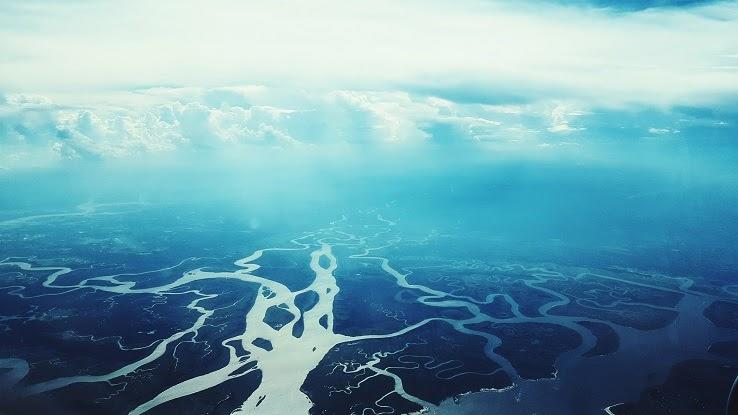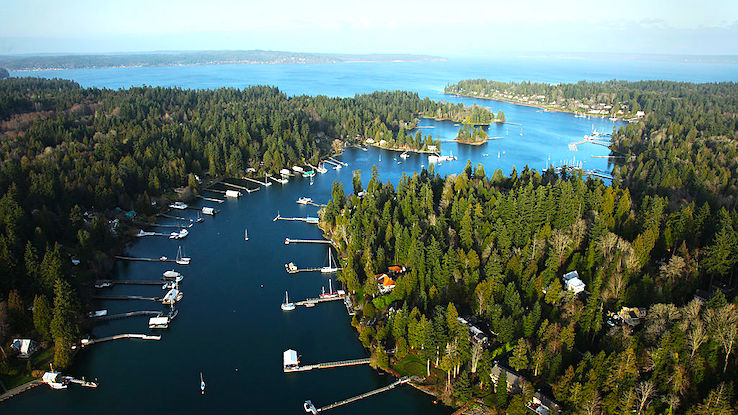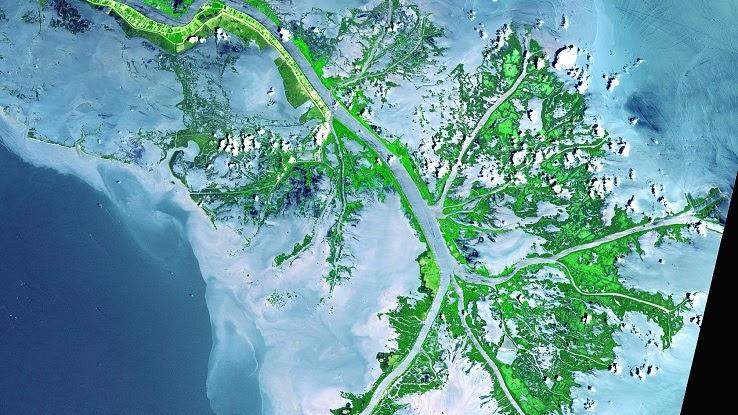Know Your Body (of Water!): The Differences Between a Bay, a Sound and a Delta

Bays, sounds and deltas are all geographical formations of land and water. Each formation involves water flowing from a large body of water to a much smaller one — which can make telling the difference between the three quite the task. Just what is the difference between a sound, a bay and a delta, and why are deltas especially important? Learn the answers to these questions — along with some other un-bay-lievable facts — below.
What Is a Bay?

A bay is a coastal geographical feature where a large body of water enters a small section of the coastline. A bay has an opening but it is partially closed in by land, and it’s typically recessed into the coastline. Although shapes can vary, bays are often shaped similarly to half-circles. The coastline makes up the curve of the shape, and the open water flows into the coastline through the flatter part of the shape. Depending on its shape and size, a bay can also be called a gulf or a cove. San Francisco Bay and Chesapeake Bay are some of the more famous bays in America.
What Is a Sound?

A sound is a geographical formation in which a portion of a large body of water flows in between two thin strips of land. Sounds are long and narrow in the way that they extend into the land; they’re sort of like large inlets. Depending on its size and depth, a geographical formation that meets the definition of a sound can also be classified as a fjord. Long Island Sound and Puget Sound are examples of sounds in the United States.
What Is a Delta?

A delta is a special geographic feature of a river. Typically, rivers run into larger bodies of water. Sometimes, the larger body of water is an ocean or a sea. The larger body of water can even be a bigger river. Deltas are often marshy areas or wetlands. Some people refer to a delta as the mouth of a river.
Water is a powerful force of nature. As water runs through a river, the water erodes the riverbed, stirring up rocks, silt, grains of sand, soil and other natural debris called sediment. The river picks up and carries much of this material along its path, and all of that sediment washes into a delta.
When a river reaches the point of a delta, the speed of its water starts to slow down as it nears the larger body of water. A delta is the slowest part of a river, in part because it holds the most buildup of sediment.
Due to the ratios of water and sediment they contain, deltas are often very muddy. These wetlands can support different types of plant and animal life than the free-flowing parts of the river upstream can. As the intersection of a small body of water and a large one, a delta is often one of the widest parts of a river.
The Nile River Delta

The Nile River, located in Africa, is the longest river in the world. The Nile Delta forms where the Nile River meets the Mediterranean Sea at the tip of Egypt. This delta is very large — roughly 93 miles long and 155 miles wide. If a car could drive across the widest part of the Nile Delta at 75 miles per hour, it would take a little over two hours to get across.
The Nile Delta is full of interesting animals. Frogs, turtles and tortoises are some of the most common reptiles in the delta. In Ancient Egypt, crocodiles and hippos ruled the Nile Delta; they were the most powerful predators in the region. Over time, the Egyptian hippo went extinct. The crocodile species that used to roam the Nile Delta is still living, but due to changes in the climate and the availability of food, these crocodiles are no longer as common in the region. Of course, the Nile Delta is full of fish. The flathead grey mullet is one species of fish that thrives in the region, and many communities value it as an important source of food.
The Mississippi River Delta

The Mississippi River Delta is the largest delta in the United States. It’s called a “birdsfoot delta” due to its distinct shape. This delta is where the large Mississippi River empties into the Gulf of Mexico. The Mississippi River Delta is fed by the Mississippi River and many of its tributaries. Tributaries are smaller bodies of water that branch off from a larger river. Tributaries add to both the water and sediment that flow in the bigger river.
Although it’s called the Mississippi Delta, much of the sediment that builds up in the delta actually comes from a tributary of the Mississippi River called the Atchafalaya River. The entire delta is 7,000 square miles in size. By comparison, the island nation of Fiji is just over 7,000 square miles.
Because this delta is such a large region, it includes everything from swampy marshlands and estuaries to dense forests. Woodland animals like coyotes, black bears and even bobcats are common in some parts of the delta. In more aquatic sections of the region, there are many bottlenose dolphins. One unexpected animal in the delta region is feral hogs. These wild hogs are an invasive species. An invasive species doesn’t naturally live in an area, and it can cause problems for the plants and animals that naturally live in the region. Mississippi wildlife authorities have started special initiatives to combat the wild hog problem.
Sounds, deltas and bays are just a few of the land and water formations that make Earth so beautiful. The intersections of small and large bodies of water provide ecosystems for some of the most unique plants and animals on the planet.





